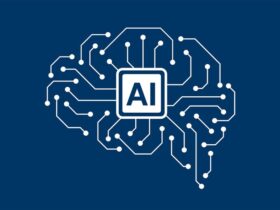Artificial intelligence or ‘AI’ for short is the development of technology that can work and perform tasks normally completed by a human. Along with saving time, AI can also help with efficiency, overriding the need to use humans when conducting the required task.
With technology ever-evolving, the possibilities of the functions and roles of AI are endless. Slowly developing and growing within the film industry, technology, and its systems are continually being trialed and tested to discover how much they can achieve on their own.
Artificial intelligence in the film industry
With the technology within the film industry continually growing, artificial intelligence is beginning to slowly take over some of the smaller tasks once completed by people. With our ability to create AI devices, this futuristic technology can aid, improve and develop an already billion-pound industry.
No longer seen through the wearing of 3D glasses, through the use of artificial intelligence, this new technology can play a huge role in the film-making and editing process.
Although nothing new, when it comes to AI and its current uses, there are three different areas where we can see the use of this technology. From, marketing and advertising, personalization of user experience to search optimization, artificial intelligence plays such a large role, that we up until now were completely unaware of.
The Watson Computer System
Until recently, the most successful AI story that has surfaced has been based on The Watson computer system.
Created in 2007, the IBM Watson supercomputer was developed to answer the questions on the American quiz show-game Jeopardy, before later making its own appearance on the show, going on to win first place. Although created for entertainment purposes, the Watson computer, took its first steps into the film industry in 2016. No longer being used just for quiz shows, Watson was used to helping create the trailer for the hit horror film, Morgan.
To create the trailer for the film, Watson was first shown a series of different trailers for horror films. By showing the computer a selection of trailers, Watson was able to diagnose the makeup of a good trailer, before using the footage from the film to create its own.
Through the use of AI, Watson was able to see the full footage of the film Morgan, with time put aside to analyze and pick out its top sections from what seemed to correlate and appear in other film trailers.
By choosing scenes that sparked fear, intensity, as well as, the feature of music, Watson was able to create a thrilling and terrifying trailer.
Through its ability to reduce the workload of editors, AI is able to select and create an entertaining and successful trailer. With the use of AI also, editors no longer have to sit sifting through film footage, choosing which scenes they would prefer to use. Instead, their video workstations allow them to be provided with suggestive clips for optimal editing.
Although not able to complete the task of creating the trailer by itself, it did do the majority of the work. A positive step for the film industry, this example of Watson has shown how through the application of simple processes, we can create effective trailers with the use of artificial intelligence.
CGI
When it comes to incorporating artificial intelligence into the world of filmmaking, the role of CGI can also improve and develop our film experience. Also referred to as computer-generated imagery, CGI is the application of computer graphics to help create special effects. Used in not just films, but also television programs and commercials, CGI can be used to help manipulate both the environment, whilst creating realistic images. Suitable for use on electronics and print media, visuals created by CGI are cost-effective and quick to create.
CGI With The Human Body
Before the ability to use computer-generated imagery, filmmakers were previously fond of motion picture suits. Through the use of motion picture suits, they could create a realistic version of a character, allowing them to move in a realistic, human way, whilst looking like a different character. Through the use of new technology and CGI, it has helped to improve the filming process, while reducing the use of motion picture suits.
An exciting new process, CGI is best seen within the making of the 2018 Avengers Infinity War. Through the use of this computer-generated imagery, viewers saw actor Josh Brolin be transformed into the character Thanos. Incredible to watch, audiences were amazed at the results of the most frequent CGI technology and in turn lead to a huge success in the box office.
When using CGI to transform the actor, a pre-recorded performance is often taken, before generating the exact scene with the actor shown as a digital character.
With the current state of computer-generated imagery focusing on the facial expressions of the actor, advances in technology are able to discover and digitize an entire human body into the intended scene.
Suited for not just turning our favorite actor into a scary monster, CGI, can also be used when filming a stunt double. To transform a student double into the main character, a robot double of the actor is used and with the use of CGI, it can transform to show the robot as the actor.
Ideal for scenes where the actor is shown flying through the air, through the use of CGI, it can reduce the need to hire a student double, saving on time and money.
CGI With Objects
Another top feature is the ability to use computer-generated images with objects. Founded in 2016 and have since been used in a majority of films, CGI allows us to add photorealistic objects into a selection of scenes in different films, at any point or camera angle.
Seen as a large step up in AI technology, CGI through the use of objects was originally a difficult task to achieve. This was due to the continually moving camera and in some cases, the object also. Creating issues with the camera, whenever the angle moved, so did the way in which the audience sees the object. Something that could potentially take time to get right and look realistic.
When using artificial intelligence with camera-generated images, as the camera angles change, so does the artificial intelligence software. Able to move along with the object, rather than using a visual effect artist to move the object, the program can do this task for itself.
Script Handling
Before, when it came to working with a script, the script was either given to the production house of executive assistance to type up. A job that no one wants to take on, this is down to its extent and length and the task of commenting and making notes across every page.
However, through the use of artificial intelligence, you are able to take away another long and unnecessary task, for the completion of AI technology.
As you may have guessed, artificial intelligence is better at script handling than humans and through the creation of algorithms, is able to speed up this process. Along with speeding up the process, AI can predict a box office success.
By being able to predict the success of films before anyone else, it can review each script and offer reliable and valuable advice, something that directors can welcome.
Personalisation of user experience
Artificial intelligence has helped to transform and change on-demand entertainment and can be seen on Netflix through the advances in Learning Workflow Management. Through monitoring what users are watching and what they are viewing, Netflix, can offer and recommend films that meet their criteria.
Helping to improve the users experience, AI by monitoring the activity of all users, can create a seamless and uncomparable experience to keep users fixed to their surface.
Improving customer satisfaction, AI is able to predict what will most likely be streamed, important on a site that has over 93 million global members and offers streaming of over 125 million hours of TV shows and movies per day.
Part of the Netflix business model, they aim through the use of machine learning to streamline the customer experience.
Search Optimisation
Another keep aspect and role of artificial intelligence in the film industry and that is through the creation of Search Optimisation. Through the addition of sites such as Zorroa, you can manage and filter through visuals from a large selection of databases. Imported by what is called an analysis pipeline, this pipeline is a process where tags are placed to each visual assets.
Artificial Intelligence plays a part in recognizing specific components of each of the visual content, allowing for an organised and well catalogued search results. Examples of search optimisation include face recognition and image classification.
Zorroa, back in 2017, announced the launch of its platform, reporting that users could perform searches and analytics of a range of assets within a selection of databases. A tool that is claimed to be used by Sony Pictures, can monetize millions of visual assets that would before take 27 hours in a short space of 3 minutes.
As we can see from looking at the development of AI technology, but also the way in which artificial intelligence is currently being used, that it has a positive effect on the film industry.
With a variety of uses, when it comes to using artificial intelligence, the options and the future of its role, are limitless.
A powerful piece of technology, when it comes to creating films, sooner rather than later, artificial intelligence, as well as CGI will become one of the most powerful pieces of technology.
Improving and developing our film experience, AI can also be used to help offer a luxury, superior streaming experience through applications, such as Netflix.
By training and teaching these devices, we can teach them to complete long and tiresome tasks for the benefit of the film industry.
The future of the cinema looks to be an exciting and thrilling place, full of potential and possibilities and we for one cannot wait to see the latest technology and what is in store.
About The Author: Sydney Tierney; just recently finished her studies; is working her way into the world of content writing as a digital marketing assistant. She writes for clients that specialize in workstations, energy procurement, and SEO specialists.








Leave a Reply